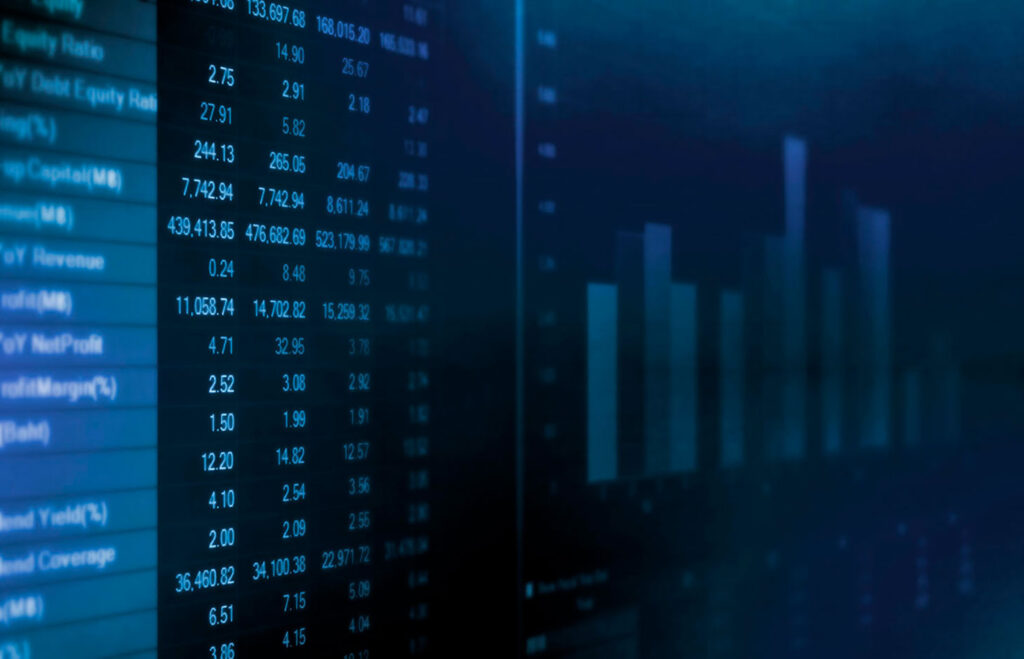The idea of more accounting compliance requirements probably doesn’t thrill you.
Or maybe it does! Who am I to know?
Either way, as a SaaS business, the generally accepted accounting principles (GAAP) standards of revenue recognition—namely ASC 606—are something you absolutely must pay attention to.
Luckily, the right software and systems can make complying with these accounting principles highly beneficial for your business.
What is ASC 606, anyway?
Accounting Standards Codification (ASC) Topic 606, Revenue from Contracts with Customers, is a new revenue recognition standard developed by the Financial Accounting Standards Board (FASB) and the International Accounting Standards Board (IASB). Quite a mouthful, I know.
Basically, this revenue recognition principle is not about the value of new sales (bookings) or how much you’ve invoiced (billings). It may not correlate with the amount you’ve successfully collected, either. It’s a more consistent way to measure the revenue generated by your business during a given timeframe, based on when the goods or services are rendered—i.e. when you hit distinct performance obligations.
Now, for a traditional business–think retail store or coffee shop–ASC 606 changed very little about the way revenue is recognized, since these types of companies deal in one-time charges. But SaaS and other subscription businesses were thrown for a bit of a loop since they deal with services that are rendered over time.
For example, say you land a new subscription. Your customer pays the up-front annual fee of $24,000. You bill them the full amount, but recognize revenue of just $2,000 for the first month. Your deferred revenue, or unearned revenue, is $22,000. The following month you recognize a further $2,000, making your deferred revenue $20,000, and so on. You do this until you have recognized all $24,000 of revenue, and have $0 deferred revenue at the end of the 12-month contract period.
And this is a very simple example. Some businesses recognize revenue weekly or even daily. Multiply that by dozens or even hundreds of customers and, well…you see why we’re still talking about ASC 606 years after its implementation.
Why is ASC 606 important?
Currently, ASC 606 is a legal obligation for any business following the GAAP framework.
But just because you kinda have to do it, doesn’t mean it’s a bad thing—the ASC 606 revenue standard actually gives you more control. Recognizing revenue according to service delivery is especially relevant at the end and beginning of the fiscal year, and can influence financial statements that you share with investors, shareholders, and lenders.
When a business is ASC 606 compliant, it helps interested parties–namely, shareholders and the IRS–get a full understanding of revenue and cash flows. For both public companies and nonpublic entities, following ASC 606 principles allows for easier comparative analysis—especially between various industries that previously used different methods of revenue recognition.
The 5-step ASC 606 framework
For your SaaS business to be in compliance with ASC 606, you’ve got to follow five steps. Broadly speaking, they are:
- Step 1: Identify the contract with a customer. This relates to the written, verbal, or implied agreement you have with the customer for the transfer of goods or services.
- Step 2: Identify the performance obligations in the contract. What do you promise to deliver on? Consider which goods or services require a separate performance obligation, and which goods or services can be combined.
- Step 3: Determine the transaction price. This is the total amount of money that your SaaS business expects to receive when you have fulfilled all performance obligations. Include variable considerations like discounts for customers that use coupons.
- Step 4: Allocate the transaction price. Decide how the total transaction price will be spread at various points throughout the contract—i.e. when each performance obligation is reached.
- Step 5: Recognize revenue. This happens either over time or at a point in time, as or when each performance obligation is satisfied.
Now we’ll talk specifically about steps 4 and 5 of the ASC 606 framework. These are the steps that tend to trip up subscription-based businesses because they can get pretty complicated if you’re working manually or without the right tools.
Thankfully, there are ASC 606-compliant billing systems out there that simplify the whole process.
Step 4 of ASC 606: Allocate the transaction price
With the right recurring billing system, when you create a product, you can set its revenue recognition method at the catalog level. This means you only need to do it once for each product. Then, when a customer purchases the product or service, the revenue recognition settings will be applied automatically and be ASC 606 compliant.
This brings us to the next question: Which revenue recognition model should you use?
There are four main ASC 606 revenue recognition methods to choose from.
Immediate
This one does what it says on the tin. The immediate revenue recognition method lets you recognize revenue… well, immediately! In the subscription world, it’s most often used for one-time charges such as set-up fees, where you satisfy a performance obligation instantly.
Manual
This is when everything stays in the deferred revenue bucket unless someone manually acts upon it. You might want to use this method for revenue that’s collected as a deposit, so may never be recognized.
Or, let’s say you’re unsure about when you will reach your contractual performance obligations. In this case, you may want to control revenue recognition programmatically by API. So once you reach a certain step—let’s say your customer signs off on a design, or you launch a website—a seamless integration triggers the API to call the recurring billing system and recognize revenue in line with ASC 606 accounting standards.
Fixed Interval
The fixed interval method of recognizing revenue is ideal for straightforward recurring billing subscriptions. Say you offer a 12-month subscription plan which is billed annually at $12,000. Simply enter the time frame and amount, and the recognized revenue can be distributed evenly at $1,000 per month.
Milestone
This is one of the more complex revenue recognition methods and involves creating a customized preset schedule. Unlike the fixed method, the amounts and intervals are irregular.
Let’s imagine your business designs and develops apps. A customer pays you to work on their mobile app project for the total agreed-upon price of $50,000. You might set up revenue recognition milestones with custom names, amounts, and timeframes that look something like this:
- Research, strategy, and wireframe. Recognize $8,000 after 30 days.
- Design and development. Recognize a further $12,000 90 days later.
- Testing phase. Recognize a further $8,000 30 days later.
- Recognize a further $10,000 30 days later.
- Ongoing maintenance. Recognize $2,000 every 30 days for 6 months.
This is a simplified example, but you get the point: revenue is recognized as you deliver the promised goods or services at each phase.
This revenue recognition schedule might work for average app development projects, but what if you land a customer that requires a wireframe after 14 days? You should have the option to change any of the revenue recognition settings at the customer level. This means you can handle specific customizations to contracts with customers and not impact your general catalog.
In case of any changes to customers’ contracts, you should also be able to go in and make edits to your schedule—for example, if a customer requests additional professional services which translates to more performance obligations throughout the contract.
Step 5 of ASC 606: Recognize revenue when or as the entity satisfies a performance obligation
Your billing system should automatically move revenue from the “deferred” bucket to the “earned” bucket, depending on when the specified good or service is delivered and according to the schedule that you set up in step 4.
Simple, right? Well…in theory, yes. However, due to the ongoing nature of subscriptions, there’s a high potential for error if you attempt it manually. Especially if you have dozens, hundreds, or even thousands of customer contracts to manage.
Ideally, your billing automation software should have the ability to integrate with your ERP and automatically push updates to your business’s ledgers.
Additional features helpful for ASC 606
Being ASC 606 compliant requires your SaaS business to provide more comprehensive disclosures, in terms of both qualitative and quantitative data in your financial reports.
To make ASC 606 compliance easier, you’ll want the help of recurring billing software with these features:
Language aligned with that of ASC 606
Accounting terminology can be confusing as it is. Choose a billing and subscription management software that uses ASC 606-aligned verbiage so you can confidently identify the steps of the new revenue standard.
Data and visibility
Your accounting and subscription management software should make it easy for you to identify the contract with a customer, see when a specified good or service has been delivered, understand when revenue is recognized, and see the remaining performance obligations in the contract.
Ability to see and build customized revenue recognition schedules
Because of the nature of software as a service business, customization is essential. Unlike some other industries, there can be complications in contracts, such as:
- mid-term cancelations by customers,
- when a customer upgrades or downgrades a subscription plan, and
- a customer who wants to switch from monthly to annual billing (or vice versa).
Other SaaS features that can cause huge amounts of manual accounting work (but luckily, can be handled quite simply with automatical revenue recognition) include:
- set-up fees,
- customization of contracts,
- usage or consumption-based fees,
- consulting fees,
- support fees, and
- fees for other mid-term and ad-hoc professional services.
Ultimately…
Automating steps 4 and 5 of the ASC 606 accounting principle includes allocating transaction prices to points in the contract when you provide services or transfer goods, then recognizing the revenue in accordance with ASC 606.
And why automate these steps? To be frank, your finance team is in for a truckload of work if you want them to try to handle it manually. Even then, you’re risking non-compliance with an important accounting standard because of the high potential for error.
Using an ASC 606-compliant billing system will reduce workload and stress, free up time for other, more impactful business activities, simplify compliance, and improve the overall health of your SaaS business.







